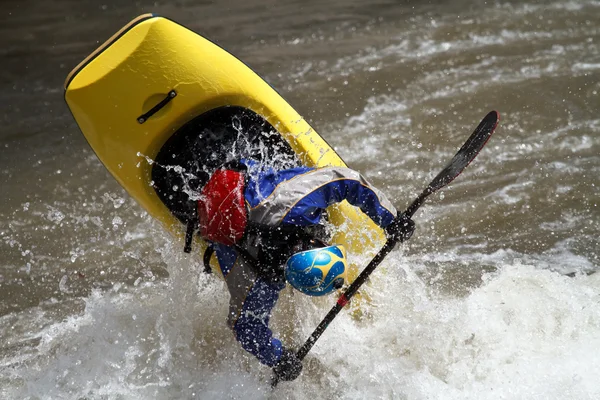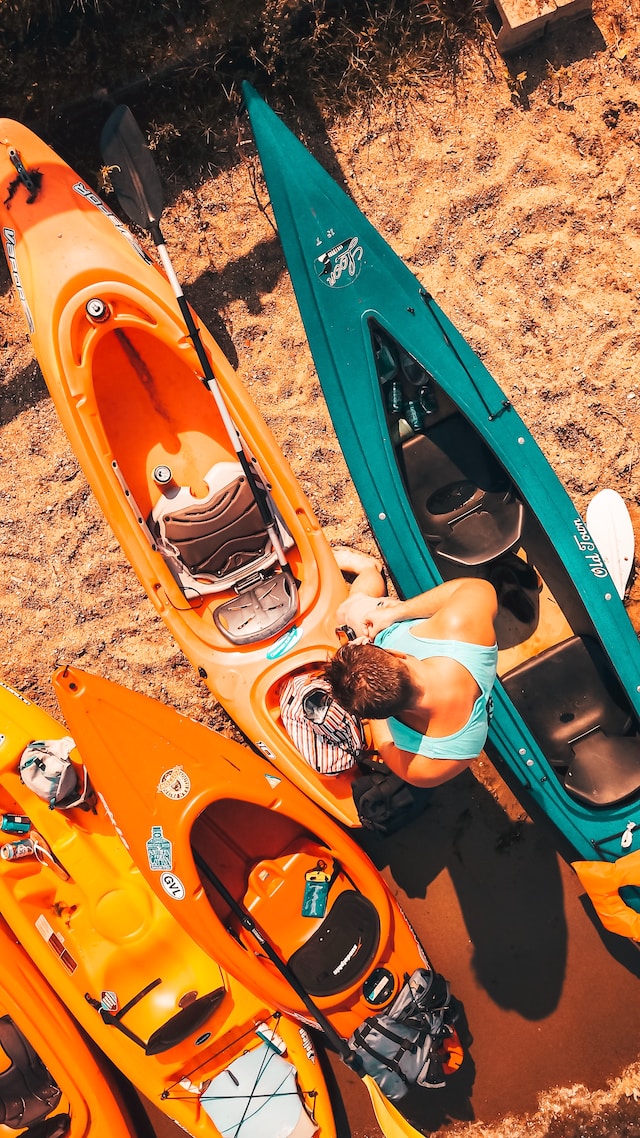How To Ship A Kayak? The Ultimate Guide
How to ship a kayak? In this article, we will take you through the essential steps and considerations for shipping a kayak, from selecting the right shipping method to properly packaging and protecting your kayak during transit.
We will provide insights into the importance of properly shipping a kayak to prevent damage and ensure its safe delivery.
You’ll also discover factors to consider before shipping your kayak, such as the size and type of kayak, shipping distance and available methods, as well as packaging and protection techniques.
Preparing your kayak for shipping is a crucial step to minimize the risk of damage during transit.
We’ll guide you through the necessary cleaning and maintenance tasks to ensure your kayak is in optimal condition.
Learn how to clean the kayak, check for any existing damage, and repair and secure any loose parts before shipping.
Choosing the right shipping method is vital to guaranteeing the smooth transportation of your kayak.
We’ll discuss various shipping options available, from freight companies and carriers to dedicated kayak shipping services and DIY transport with rental trailers or roof racks.
You’ll gain valuable insights into the pros and cons of each option.
In addition, we’ll provide detailed information on packaging and protecting your kayak.
Discover the necessary supplies, such as high-quality packaging materials, straps, tie-downs, and padding, to ensure the secure packaging of your kayak.
Whether you have a single-piece kayak or a sectional/folding kayak, we’ll provide step-by-step instructions on how to package it safely for shipping.
Arranging and tracking the shipment is the final step in the process.
We’ll guide you on how to schedule the shipment, communicate with the shipping provider, and obtain tracking information to monitor your kayak’s progress during transit.
With our expert guidance and insider tips, you can have peace of mind knowing that your kayak will be shipped safely and securely.
So let’s dive into the ultimate guide on how to ship a kayak and ensure the safe transportation of your watercraft to its destination!
Importance of Properly Shipping a Kayak
The last thing you want is for your cherished kayak to arrive at its destination with damages that could have been prevented.
Properly shipping a kayak is key to preventing any mishaps during transit and ensuring its safe arrival to your desired location.
Without proper packaging, protection, and handling, your kayak may suffer from scratches, dents, or even structural damages.
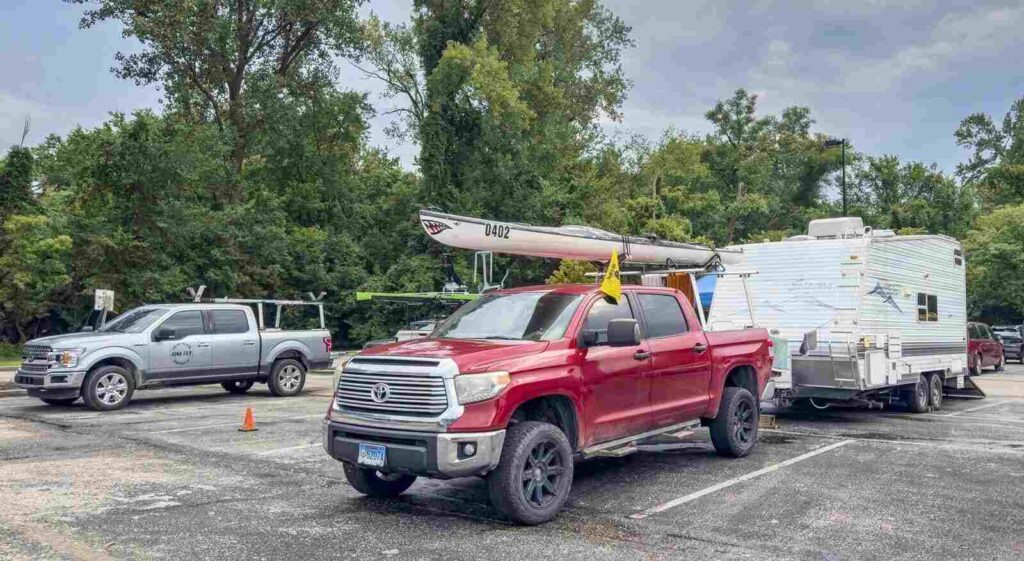
This can result in costly repairs or the need for a complete replacement, which can be both financially and emotionally burdensome.
By taking the time to learn how to properly ship your kayak, you can greatly minimize the risks of damage during transit and ensure its safe delivery.
Whether you’re shipping your kayak to a new location for an adventure or selling it to a buyer, following the right procedures is crucial.
Properly shipping your kayak involves various considerations, such as choosing the right shipping method, preparing the kayak for shipment, and packaging it securely.
Each step plays a significant role in ensuring the safe transportation of your kayak and preventing any potential damage along the way.
In the following sections, we will explore these considerations in detail, providing you with valuable information and tips to help you ship your kayak safely.
Related Content
- ESSENTIAL KAYAKING SAFETY TIPS FOR ALL
- HOW TO CLEAN A KAYAK? – THE ULTIMATE GUIDE
- HOW DEEP ARE KAYAK POOLS? – A SIMPLE GUIDE
- WHAT SIZE KAYAK DO I NEED? – A COMPREHENSIVE GUIDE
How To Ship A Kayak?
Before shipping your kayak, there are several important factors that you should consider to ensure a smooth and safe journey.
These factors include the size and type of kayak, the shipping distance and method, and the proper packaging and protection methods.
By taking these factors into account, you can ensure that your kayak arrives at its destination in the best possible condition.
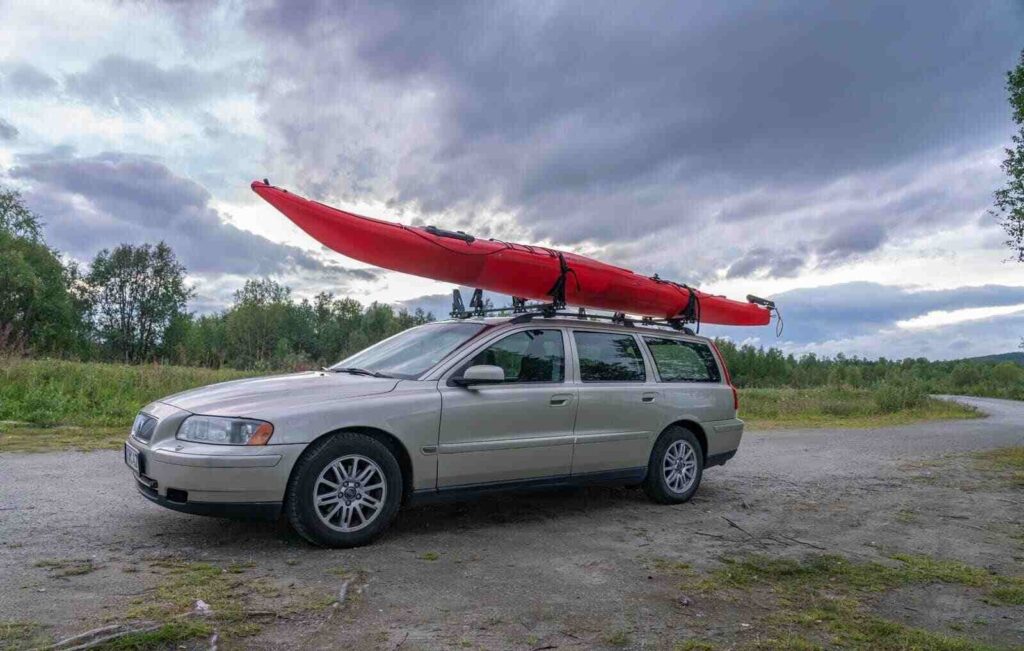
Size and Type of Kayak
The size and type of kayak play a crucial role in determining the most suitable shipping method.
Different kayaks may have specific requirements for transportation.
For example, a smaller kayak may be able to be shipped using a standard courier service, while a larger kayak may require specialized freight shipping.
Understanding the size and type of your kayak will help you choose the right shipping option and avoid any potential risks or damages.
Shipping Distance and Method
The shipping distance and method are important considerations when shipping a kayak.
If you’re shipping your kayak domestically, you may have more options available, such as ground transportation.
However, if you’re shipping internationally or over long distances, you’ll need to consider alternative shipping methods like air freight or ocean freight.
Evaluating the shipping distance and available methods will help you make an informed decision about the most suitable and cost-effective option for your kayak.
Packaging and Protection
Proper packaging and protection are crucial to ensure that your kayak remains safe and secure during transit.
You’ll need to invest in high-quality packaging materials, such as bubble wrap or foam, to protect your kayak from potential damage.
Additionally, securing the kayak with straps and tape and reinforcing the ends and fragile areas can help prevent any movement that could result in scratches or dents.
Taking the necessary steps to package and protect your kayak will give you peace of mind during the shipping process.
Preparing Your Kayak for Shipping
Properly preparing your kayak for shipping is essential to ensure its safety during transit.
By following a few simple steps, you can help minimize the risk of damage and ensure a smooth shipping process.
Here’s a guide to readying your kayak for shipment:
Cleaning the Kayak
Before shipping your kayak, it’s important to give it a thorough cleaning.
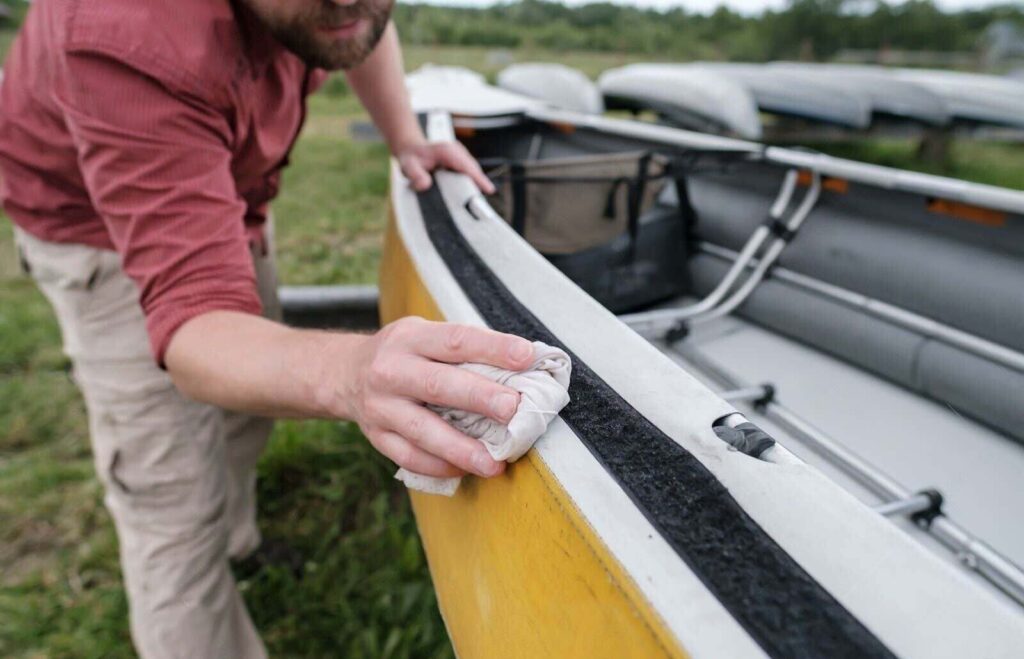
Remove any dirt, sand, or debris that may have accumulated on the surface.
Using a mild detergent and water, gently scrub the kayak with a soft brush or sponge, paying attention to all areas, including the hull, cockpit, and accessories such as handles and hatches.
Rinse off the kayak thoroughly and allow it to dry completely before proceeding.
Checking for Any Existing Damage
Inspect your kayak for any existing damage that may affect its structural integrity during shipping.
Look for cracks, dents, or scratches on the hull or any accessories. Pay close attention to areas where stress is commonly applied, such as the bow and stern.
If you notice any damage, it’s important to address it before shipping. Repairing any loose or damaged parts and reinforcing weak areas will help ensure the kayak’s safety during transit.
Securing Loose Parts
Before shipping, make sure to secure any loose parts or accessories on your kayak.
Remove any detachable items, such as seats, storage compartments, or fishing rod holders, and pack them separately.
If there are any movable parts that cannot be detached, such as rudders or foot braces, ensure they are properly secured and won’t move during transit.
This will help prevent any potential damage or loss of parts during shipping.
By following these steps to prepare your kayak for shipping, you can help ensure its safety and protect it from damage during transit.
Taking the time to clean, inspect, and secure your kayak will give you peace of mind knowing that it will arrive at its destination in optimal condition, ready for your next adventure.
Cleaning and Maintenance
Cleaning the Kayak
Before shipping your kayak, it is essential to clean it thoroughly to remove any dirt, debris, or saltwater residue.
This will not only help maintain the kayak’s appearance but also prevent any potential damage during transit.
To clean your kayak:
- Rinse the kayak with fresh water to remove loose dirt and debris.
- Use a mild detergent or kayak-specific cleaner to scrub the surface, focusing on any stubborn stains.
- Rinse the kayak again to remove any remaining cleaning solution.
- Dry the kayak completely before packaging it for shipment.
Checking for Any Damage
Before shipping your kayak, it is crucial to inspect it for any existing damage that might affect its structural integrity.
This will ensure that any necessary repairs are made before shipment.
Here’s how to check for damage:
- Thoroughly inspect the hull, cockpit, and other areas for cracks, dents, or other signs of damage.
- Check the fittings, including hatches, handles, and rudders, to ensure they are secure and in good condition.
- Examine the seat and foot braces for any loose or broken components.
- If any damage is found, take the necessary steps to repair or replace the affected parts.
Repairing and Securing Loose Parts
If you find any loose or broken parts during your inspection, it is essential to repair and secure them before shipping.
Here are some steps to follow:
- Tighten any loose fittings, such as hatches or handles, using the appropriate tools.
- If any parts are broken or missing, replace them with new ones.
- Secure any loose components, such as the seat or foot braces, to prevent them from moving during transit.
- Double-check that all parts are properly secured before packaging your kayak.
Disassembling the Kayak
Properly disassembling your kayak is an essential step in preparing it for shipping.
Follow these step-by-step instructions to disassemble your kayak and ensure its safe transportation:
Removing Accessories and Add-ons
Start by removing any accessories or add-ons from your kayak.
This includes items like fishing rod holders, GPS devices, and seat cushions.
Store these accessories safely to prevent loss or damage during shipping.
Detaching Seats and Storage Compartments
If your kayak has detachable seats or storage compartments, remove them carefully. Refer to the manufacturer’s instructions if necessary.
Pack these items separately to prevent any damage.
Folding or Separating Kayak Sections
If your kayak is foldable or consists of multiple sections, follow the instructions provided by the manufacturer to fold or separate the kayak.
Make sure to secure any loose parts and ensure that the kayak is properly folded or separated for safe shipping.
By disassembling your kayak in these steps, you can minimize the risk of damage during transit and ensure that all parts are securely packaged.
Follow the provided guidelines for a hassle-free shipping experience.
Right Shipping Method
When it comes to shipping your kayak, choosing the right shipping method is essential for a safe and hassle-free transport.
With various shipping options available, it’s important to consider factors such as budget, convenience, and the specific needs of your kayak.

Here are some guidelines to help you make the best choice:
- Freight Companies and Carriers: Freight companies and carriers offer shipping services for kayaks, usually providing a cost-effective and reliable solution. Consider their reputation, experience, and insurance coverage when selecting this option.
- Dedicated Kayak Shipping Services: Some companies specialize in kayak shipping and offer tailored services to ensure the proper handling and protection of your kayak. Although this option might be more expensive, it provides expertise in transporting kayaks safely.
- DIY Transport with Rental Trailers or Roof Racks: If you prefer a hands-on approach, you can choose to transport your kayak yourself using rental trailers or roof racks. This option allows for more flexibility but requires careful consideration of safety measures and securing the kayak properly.
Take into account your budget, timeline, and personal preferences when selecting the most suitable shipping method for your kayak.
Ensure that the chosen method provides adequate protection, tracking options, and insurance coverage to give you peace of mind throughout the shipping process.
Shipping Options Overview
In order to transport your kayak, you have several shipping options to choose from. Each option has its own advantages and considerations.
Here is an overview of the main shipping options available for transporting your kayak:
Freight Companies and Carriers
Freight companies and carriers offer reliable and secure transportation for your kayak. These companies specialize in shipping various types of goods, including kayaks.
They have experience handling bulky and fragile items, ensuring that your kayak is properly protected during transit.
Freight companies often offer tracking services so that you can monitor the progress of your shipment.
Dedicated Kayak Shipping Services
For specific kayak shipping needs, there are dedicated services that specialize solely in transporting kayaks.
These services are designed to handle kayaks of different sizes and types, providing the necessary packaging and protection to ensure a safe journey.
Dedicated kayak shipping services may offer additional benefits such as insurance coverage and expedited shipping options.
DIY Transport with Rental Trailers or Roof Racks
If you prefer a more hands-on approach, you can choose to transport your kayak yourself using rental trailers or roof racks.
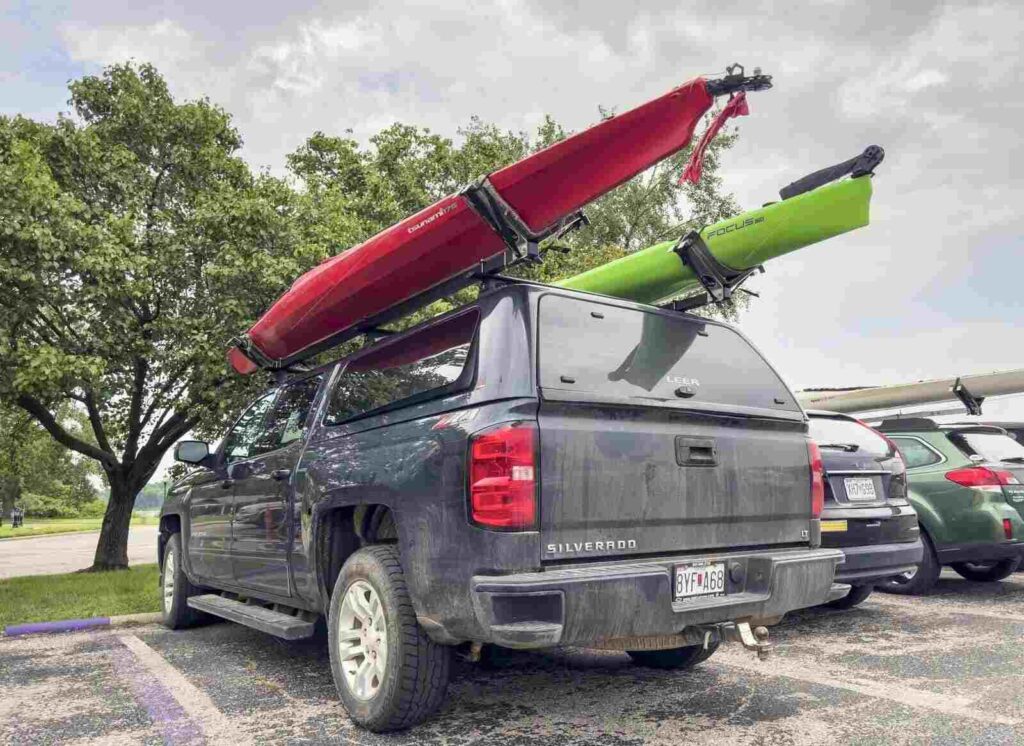
Renting a trailer or utilizing roof racks on your vehicle allows you to have control over the transportation process.
However, it is important to carefully secure your kayak to ensure it remains safe and stable during transit.
When considering your shipping options, it is important to weigh factors such as cost, convenience, and the specific needs of your kayak.
Assess the pros and cons of each option to make an informed decision that best suits your requirements.
Different Shipping Methods and How Much Does It Cost to Ship a Kayak?
When it comes to shipping your kayak, it’s important to evaluate the different shipping methods available to you.
By comparing costs and insurance coverage, considering time and delivery speed, and assessing convenience and tracking options, you can make an informed decision that meets your specific shipping needs.
Comparing Costs and Insurance Coverage
One of the key factors to consider when choosing a shipping method for your kayak is the cost.
Different shipping options may have varying price points, so it’s essential to evaluate and compare the costs associated with each method.
Additionally, it’s important to inquire about insurance coverage to ensure your kayak is protected during transit.
Time and Delivery Speed
Time and delivery speed are critical considerations when shipping your kayak.
Some shipping methods may offer faster delivery times, while others may take longer. Consider your specific timeline and how quickly you need your kayak to arrive at its destination.
This will help you determine the most suitable shipping method based on your time constraints.
Convenience and Tracking Options
Convenience and tracking options can greatly enhance your shipping experience.
Evaluate the convenience of each shipping method, such as pick-up and drop-off locations, door-to-door service, or access to shipping centers.
Additionally, inquire about tracking options to stay updated on the progress of your kayak during transit, giving you peace of mind.
By thoroughly evaluating different shipping methods based on cost, insurance coverage, time, delivery speed, convenience, and tracking options, you can make an informed decision that best suits your needs.
Remember to consider your budget, timeline, and peace of mind when selecting the ideal shipping method for your kayak.
Packaging and Protecting Your Kayak
Proper packaging and protection are crucial to ensure the safe delivery of your kayak during shipment.
By following these valuable tips and techniques, you can minimize the risk of damage and keep your kayak in excellent condition throughout transit.
Start by gathering the necessary supplies for packaging your kayak securely.
It is important to choose high-quality materials that can withstand the rigors of shipping. Consider using bubble wrap or foam to wrap your kayak, providing an extra layer of protection against bumps and scratches.

Additionally, ensure that you have strong straps and tie-downs to secure the kayak in place.
When packaging your kayak, pay careful attention to vulnerable areas such as the ends and fragile parts.
Reinforce these areas with additional padding or cushioning materials to provide extra support and prevent any potential damage during transit.
Remember, the key to successful shipping is proper packaging.
Take the time to gather the right supplies and package your kayak with care.
By doing so, you can have peace of mind knowing that your kayak will arrive at its destination unharmed and ready for your next adventure.
Gathering the Necessary Supplies
Properly packaging a kayak for shipment requires specific supplies to ensure its safety during transit.
Here are the essential materials you will need:
Quality Packaging Materials
Choose high-quality packaging materials such as bubble wrap or foam to protect your kayak from bumps and scratches during shipping.
These materials provide a cushioning effect and help absorb any impact that may occur.
Straps and Tie-Downs
Securely fasten your kayak in place using strong straps and tie-downs.
These will prevent any movement or shifting of the kayak during transportation, reducing the risk of damage.
Padding and Cushioning Materials
Use padding and cushioning materials like foam blocks or inflatable bags to add an extra layer of protection to your kayak.
These materials fill in any gaps and provide added stability, minimizing the chances of the kayak getting damaged.
Packaging a Single-piece Kayak
Proper packaging is essential to ensure the safe transportation of a single-piece kayak. Follow these step-by-step instructions to package your kayak securely for shipping:
1. Wrapping with Bubble Wrap or Foam
Start by wrapping the entire kayak with bubble wrap or foam.
This will provide a protective layer against bumps and scratches during transit.
Ensure that the kayak is fully covered and that all vulnerable areas are adequately cushioned.
2. Securing with Straps and Tape
Once the kayak is wrapped, use heavy-duty straps to secure it.
Place the straps strategically around the kayak, making sure they are tight enough to hold the kayak in place but not so tight as to cause damage.
Additionally, use strong packing tape to reinforce the straps and prevent them from loosening during shipping.
3. Reinforcing Ends and Fragile Areas
Pay special attention to the ends and any fragile areas of the kayak.
These areas are more susceptible to damage during shipping.
Reinforce the ends of the kayak by adding extra padding or foam, and add additional layers of bubble wrap or foam to any fragile areas to provide extra protection.
By following these steps, you can ensure that your single-piece kayak is securely packaged for shipping, minimizing the risk of damage during transit.
Take the time to package your kayak properly to ensure it arrives at its destination in pristine condition.
Packaging a Sectional or Folding Kayak
With sectional and folding kayaks growing in popularity, it’s important to know how to properly package and secure them for shipping.
These kayaks offer the convenience of easy storage and transport, but they require special care to ensure they arrive at their destination without any damage.
Follow these steps to package your sectional or folding kayak securely and provide peace of mind during shipment.
Disassembling and Wrapping Each Section
1. Begin by disassembling your sectional or folding kayak according to the manufacturer’s instructions.
2. Carefully wrap each section individually using bubble wrap or foam padding. Ensure that the entire section is covered to protect it from scratches or other potential damage during transit. Use packing tape to secure the wrapping in place.
Securing Sections Together
1. After wrapping each section, secure them together to prevent any movement or shifting during shipment.
2. Use high-quality straps or tie-downs to tightly secure the sections together. Make sure the straps are evenly distributed and provide a stable connection between the sections.
3. Double-check that the straps are properly tightened and adjust as necessary to minimize any potential movement.
Additional Padding and Stabilization Techniques
1. To provide extra protection during transit, consider adding additional padding to vulnerable areas of your kayak.
2. Use foam blocks or inflatable airbags to fill any empty spaces between the sections or around the kayak. This will help absorb any shocks or impacts that may occur during shipping.
3. If your sectional or folding kayak has delicate components, such as rudders or hatches, cover them with extra padding or protective materials to prevent damage.
4. Finally, ensure that the entire packaged kayak is stabilized within the shipping container or vehicle by securing it with straps or ropes.
By following these guidelines, you can confidently package your sectional or folding kayak for shipment, ensuring that it stays safe and secure throughout the entire process.
Remember to always follow the manufacturer’s instructions and consider the specific needs of your kayak when determining the appropriate packaging and securing methods.
Arranging and Tracking the Shipment
Once you have properly packaged your kayak, the next step is to arrange the shipment with your chosen shipping provider.
Effective communication and coordination with the provider are essential to ensure a smooth delivery process.
Start by contacting the shipping provider and providing them with all the necessary information about your shipment, including the pickup location and the delivery address.

Discuss any specific requirements or instructions you may have for the shipment, such as fragile handling or expedited delivery.
During this process, it is crucial to obtain tracking information from the shipping provider.
Tracking allows you to monitor the progress of your kayak during transit.
It provides you with real-time updates on its location and estimated delivery time.
This ensures peace of mind and allows you to plan for the arrival of your kayak.
Once you have arranged the shipment and received the tracking information, stay in touch with the shipping provider throughout the delivery process.
If you have any questions or concerns, don’t hesitate to reach out to them for assistance.
This open line of communication will help ensure a successful and on-time delivery of your kayak.
Scheduling the Shipment
When it comes to shipping your kayak, careful planning and effective communication are essential for a smooth and successful delivery.
This section will provide valuable advice on scheduling your kayak shipment, ensuring that it arrives at its destination on time and in great condition.
Planning the Ideal Shipping Date
Before scheduling your kayak shipment, it’s important to consider a few key factors.
Firstly, take into account the weather conditions along the shipping route and at the destination to avoid any potential issues during transit.
Additionally, consider the availability of the recipient to ensure that someone will be present to receive the kayak upon delivery.
Communicating with the Shipping Provider
Open and effective communication with the shipping provider is crucial for a successful kayak shipment.
Reach out to the provider to discuss the specific requirements and expectations of the shipment.
This will help the provider tailor their services to meet your needs and ensure a smooth delivery process.
Obtaining Tracking Information
To stay informed about the status and whereabouts of your kayak during transit, it’s essential to obtain tracking information from the shipping provider.
This will allow you to monitor the progress of your shipment in real-time and address any potential issues that may arise.
Stay proactive and keep yourself updated throughout the entire shipping process.
Ensuring Proper Insurance Coverage
When shipping your kayak, it is crucial to ensure that you have the proper insurance coverage in place to protect your investment.
Understanding the liability and coverage limits offered by your chosen shipping provider is essential in mitigating any potential risks during transit.
It is also advisable to consider supplementing your shipping insurance for added peace of mind.
By documenting the kayak’s condition pre-shipment, you can provide evidence to support any insurance claims in case of damage.
This documentation can include photographs, videos, or written records that clearly show the condition of the kayak before it is shipped.
Taking these proactive steps will help secure your kayak shipment and provide you with the necessary protection and recourse in case of any unfortunate incidents.
Receiving and Unpacking Your Kayak
Once your kayak arrives at its destination, it’s time to receive and unpack it. Follow these steps to ensure a smooth process:
- Conduct an Initial Visual Inspection: Begin by visually inspecting the kayak for any visible signs of damage or mishandling during shipment. Look for dents, scratches, or other indications of potential problems. If you notice any issues, document them to address with the shipping provider.
- Check for Any Damage or Missing Parts: Thoroughly examine the kayak to ensure there are no hidden damages or missing components. Verify that all accessories, seats, and storage compartments are intact. If anything is damaged or missing, contact the shipping provider immediately to report the issue and initiate any necessary claims.
- Safely Unpack the Kayak: Carefully unwrap and unbox the kayak, ensuring that you remove all packaging materials without causing any harm to the kayak’s surface. Pay attention to any fragile areas or connectors that may require extra caution during the unpacking process.
- Prepare the Kayak for Use: Once unpacked, take a moment to clean the kayak and perform any necessary maintenance tasks. Check for any residual packaging materials or debris that may have accumulated during transit. Conduct a final inspection to ensure the kayak is in optimal condition and ready for use.
By following these steps, you can receive and unpack your shipped kayak with confidence, ensuring that it has arrived safely and is ready for your next kayaking adventure.
Inspecting the Shipment
Conducting an Initial Visual Inspection
After your kayak has been delivered, it is essential to conduct an initial visual inspection to ensure its condition. Carefully examine the exterior of the kayak for any noticeable signs of damage or mishandling during shipping. Look for scratches, dents, or punctures that may have occurred during transit.
Checking for Any Damage or Missing Parts
In addition to the visual inspection, thoroughly check the kayak for any hidden damage or missing parts.
Inspect the hull, deck, and all accessories to ensure they are intact and functioning properly.
Pay close attention to key areas such as hatches, seats, and rudders. If there are any signs of damage or if any parts are missing, make sure to document them immediately.
If you discover any issues with your shipped kayak, it is crucial to take appropriate actions.
Contact the shipping provider and inform them about the damage or missing parts.
Provide them with all the necessary documentation, including photographs and written descriptions of the problems.
Depending on your insurance coverage, you may also need to file an insurance claim.
By conducting a thorough inspection of your shipped kayak, you can address any issues promptly and ensure that you receive the necessary support to resolve them.
Remember to document any damage or missing parts and contact the shipping provider as soon as possible for a resolution.
Conducting an Initial Visual Inspection
Here’s a quick guide on how to conduct an initial visual inspection of your kayak:
1. Check the hull for any cracks, scratches or dents. If you see any, make a note of them and repair them as soon as possible.
2. Check all the hardware on your kayak. Make sure that all the screws, nuts and bolts are tight and in good condition.
3. Check the condition of your kayak’s deck. Make sure that there are no cracks or splits in the deck. Also, check to see if the deck is securely attached to the hull.
4. Inspect your kayak’s paddles. Make sure that they are in good condition and free of any cracks or splits.
5. Check your kayak’s life jacket. Make sure that it is in good condition and that all the straps and buckles are secure.
By conducting an initial visual inspection of your kayak, you can be sure that it is in good condition and ready for use. So, take some time to inspect your kayak today!
Checking for Any Damage or Missing Parts
When your kayak arrives, the first thing you should do is inspect the packaging.
If there are any signs of damage, take pictures and contact the seller or shipping company immediately.
It’s also a good idea to open up the package and make sure everything is there.
Most kayaks will come with paddles, life jackets, and other accessories. If anything is missing, again, take pictures and contact the seller or shipping company.
Once you’ve verified that the kayak and all its parts are accounted for, it’s time to start inspecting the kayak itself.
Look for any signs of damage, such as scratches, dents, or cracks. Again, take pictures and contact the seller or shipping company if you find anything.
Once you’re satisfied that the kayak is in good condition, it’s time to start thinking about how you’re going to get it from point A to point B.
If you’re not planning on paddling it to your destination, you’ll need to figure out how to ship it.
Safely Unpacking and Assembling
1. Start by unboxing the kayak. If it’s a single-piece kayak, packaging will be pretty straightforward. Simply cut open the box and carefully pull the kayak out. If you have a multiple-piece kayak, you’ll need to follow the instructions that came with the kayak for how to disassemble it for shipping.
2. Next, set up the kayak in an open area. You’ll need to be able to move around it easily so make sure you have plenty of space.
3. Inspect the kayak for any damage that may have occurred during shipping. If you see any cracks, dents or other damage, take photos of it and contact the company you purchased the kayak from immediately.
4. Once you’re satisfied that the kayak is in good condition, it’s time to start assembling it. If you have a single-piece kayak, this simply involves attaching the seat and any other accessories that came with it. For a multiple-piece kayak, you’ll need to follow the assembly instructions that came with the kayak.
5. Once the kayak is assembled, it’s time to start packing it for transport. If you’re driving to your put-in location, you can simply put the kayak on your roof rack and tie it down. If you’re flying or taking public transportation, you’ll need to find a way to safely transport the kayak. There are special kayak bags that can be used for this purpose or you can simply wrap the kayak in soft materials like blankets or towels.
6. When you’re ready to head out, make sure you have all the necessary safety gear with you. This includes a life jacket, paddle and a throw bag in case you capsize.
With these simple tips, you’ll be able to safely unpack and assemble your new kayak so you can start enjoying the waterways!
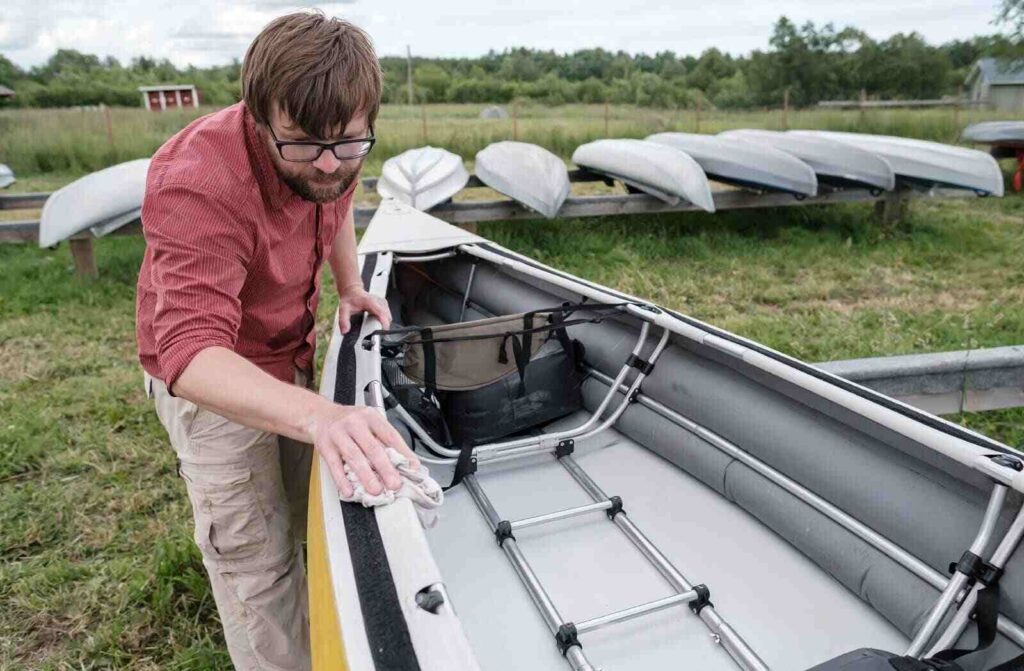
Summary
If you’re planning on moving your kayak to a new location, you’ll need to know how to ship a kayak.
Shipping a kayak is different than shipping other types of vehicles because kayaks are long and thin, and they’re often made of fragile materials.
Before you ship your kayak, there are a few factors you need to consider.
First, you need to decide what type of shipping container you’ll use.
There are a few different options available, and each has its own benefits and drawbacks.
You also need to decide how you’re going to ship the kayak. You can either ship it by itself or with other items.
Shipping a kayak by itself is the safest option, but it’s also the most expensive.
If you’re shipping the kayak with other items, you’ll need to make sure that the kayak is securely fastened to the other items so that it doesn’t move around during shipping.
How much does it cost to ship a kayak?
The cost of shipping a kayak depends on a few factors, including the size of the kayak, the shipping method you choose, and the distance the kayak is being shipped.
In general, it will cost more to ship a larger kayak than a smaller one.
Shipping by air is usually the most expensive option, but it’s also the fastest. Shipping by ground is typically less expensive, but it will take longer for the kayak to arrive at its destination.
Now that you know how to ship a kayak and what factors to consider before shipping one, you can start planning your move.
Just be sure to get a few quotes from different shipping companies before you make your final decision.
Frequently Asked Questions
What is the best way to ship a kayak?
The best way to ship a kayak depends on various factors, such as your location, budget, and personal preferences. Here are a few commonly used methods:
Freight Shipping: Contact freight shipping companies that specialize in oversized or bulky items. They have the expertise and equipment to handle kayak transportation. They can palletize and secure your kayak for transit, ensuring its safety.
LTL (Less Than Truckload) Shipping: If you don’t have a full truckload of kayaks, you can use LTL shipping. LTL carriers consolidate multiple shipments to utilize the truck’s full capacity, reducing costs and environmental impact.
Courier Services: Look for couriers that handle large and bulky items like kayaks. These services specialize in shipping oversized sports equipment and can provide customized packaging and delivery options.
Self-Shipping: For shorter distances, you can consider self-shipping. Use a roof rack or kayak trailer to secure the kayak to your vehicle. Ensure it’s properly strapped to prevent any damage during transit.
Through a Kayak Dealer: If you’re purchasing a new kayak, some dealers offer shipping services. They have experience packaging and shipping kayaks, ensuring they arrive safely at your desired location.
Consider factors like cost, convenience, and the distance to determine the best shipping method for your specific needs. Always communicate with the shipping company or service to understand their requirements and guidelines for packaging and protecting the kayak during transportation.
How do you wrap a kayak for shipping?
To wrap a kayak for shipping, follow these basic steps:
Clean the Kayak: Thoroughly clean the kayak before wrapping it to remove any dirt or debris. This helps to prevent any damage during transit.
Protect Vulnerable Areas: Pay special attention to vulnerable areas like the bow, stern, and cockpit. Cover these areas with foam padding, bubble wrap, or old towels to provide extra protection.
Secure Loose Items: Remove any loose parts or accessories, such as paddles, seats, or rudders. Pack them separately in a secure container and label them appropriately.
Wrap and Secure: Start by covering the entire kayak with heavy-duty plastic wrap or shrink wrap. This helps protect the surface from scratches and minor impacts. Wrap it tightly, ensuring the wrap is secure and won’t come off during transit.
Padding and Cushioning: Use additional padding materials like foam blocks, pool noodles, or inflated packing material to add cushioning to the kayak’s sides and edges. This protects against potential impacts during shipping.
Reinforce with Strapping: Use strong and durable nylon straps or tie-downs to secure the kayak and prevent any movement or shifting during transportation. Strap the kayak tightly across the length and width to keep it stable.
Label and Protect: Clearly label the packaged kayak with your name, address, and contact information. Consider wrapping the entire package with plastic wrap or using a protective cover for weatherproofing.
Remember, these are general guidelines, and it’s essential to follow any specific instructions provided by the shipping company or service you choose. Ensuring the kayak is well-packaged and properly secured will help protect it during shipping and ensure it arrives at its destination safely.
How do I ship a kayak overseas?
Shipping a kayak overseas requires careful planning and coordination. Here’s a brief overview of the process:
Choose a Shipping Method: Research international shipping companies or freight forwarders that specialize in transporting oversized items or sports equipment. They will often have experience shipping kayaks internationally.
Check Legal and Customs Requirements: Verify the regulations and restrictions for shipping kayaks to the destination country. This includes any import/export licenses, customs duties, and specific shipping requirements.
Packaging: Properly package the kayak for international shipping. Clean it thoroughly and protect vulnerable areas with foam padding or bubble wrap. Use heavy-duty plastic wrap or shrink wrap to cover the kayak entirely. Secure loose items separately.
Documentation: Prepare all the necessary shipping and customs documentation. This may include a bill of lading, commercial invoice, packing list, and any other required forms. Ensure you have accurate information on the value and description of the kayak.
Shipping Insurance: Consider purchasing shipping insurance to protect your kayak in case of loss, damage, or theft during transit. Consult with the shipping company regarding insurance options and coverage.
Customs Clearance: Provide all necessary documentation to customs authorities to facilitate the smooth clearance of your kayak at the destination port. This may require working with a customs broker or agent who specializes in shipping procedures.
Tracking and Communication: Choose a shipping method that provides tracking capabilities, so you can monitor the progress of your kayak during transit. Stay in contact with the shipping company to stay informed about any updates or changes to the shipping process.
It’s important to consult with the shipping company or freight forwarder directly to understand their specific requirements, shipping options, and associated costs for shipping a kayak overseas. They will be able to guide you through the process and help ensure the smooth transportation of your kayak to its international destination.
How do you transport a long kayak?
When it comes to transporting a long kayak, there are a few methods you can consider:
Roof Racks: Utilize a roof rack system designed for kayaks. Most vehicles can accommodate rooftop kayak carriers that secure the kayak on its side or upside down. Make sure to follow the manufacturer’s instructions for proper installation and secure the kayak tightly with straps or tie-downs.
Bed Extender: If you have a pickup truck with a shorter bed, consider using a bed extender. This accessory attaches to the hitch receiver and extends the bed’s length, allowing you to transport the kayak securely in the truck bed.
Trailer: Opt for a kayak trailer designed specifically for transportation. These trailers generally have kayak-specific racks that securely hold the kayak in place. Secure the kayak firmly using straps, and ensure the trailer has proper lighting and is compliant with local regulations.
Inside a Vehicle: If your vehicle’s interior is spacious enough, you can transport a shorter kayak by placing it inside the vehicle. Ensure the kayak is clean and that it doesn’t obstruct your view or compromise your safety while driving.
Always prioritize safety when transporting a long kayak. Secure it tightly using high-quality straps or tie-downs to prevent any movement or shifting during transportation. Before hitting the road, double-check that the kayak is safely loaded and won’t damage your vehicle or pose a hazard to other drivers.
Is it better to transport a kayak up or down?
When transporting a kayak on a roof rack or trailer, it is generally better to transport it with the bow (front) facing forward. Here’s why:
Aerodynamics: Transporting the kayak with the bow facing forward helps improve aerodynamics. The streamlined shape of the kayak allows air to flow smoothly over it, reducing wind resistance and drag. This can result in better fuel efficiency, smoother driving, and less strain on your vehicle.
Stability: Positioning the kayak with the bow facing forward can enhance stability during transportation. The shape and design of the kayak are typically optimized for forward movement. By placing the bow forward, it minimizes the chances of the kayak catching side winds or shifting around during transit.
Reduced Rear Overhang: Transporting the kayak with the bow forward results in a shorter overhang at the rear of the vehicle or trailer. This helps reduce the chances of the kayak hitting the ground or obstacles when going over bumps or navigating uneven terrain.
Easy Unloading: When you arrive at your destination, unloading the kayak with the bow facing forward allows for a smoother process. You can easily access the bow when it is positioned towards the front of your vehicle or trailer, making it easier to remove the kayak safely.
While transporting the kayak with the bow facing forward is generally recommended, it’s essential to follow the guidelines and recommendations provided by the kayak manufacturer and the roof rack or trailer manufacturer. Ensure that the kayak is securely and tightly strapped down to prevent any movement or damage during transportation.


